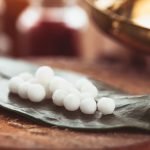Treatment of Lymphoma with Helixor: A Case Study
Beverly Huang, ND
JW, 78 years old, first presented to me in July 2008, after months of feeling unwell and having been diagnosed with Stage 3B diffuse large B-cell lymphoma a month earlier. Diffuse large B-cell lymphoma is a non-Hodgkin lymphoma; it is a high-grade (fast growing) cancer of the B-lymphocytes. In Stage 3 the lymphoma is determined to be in lymph nodes above and below the diaphragm, and could include the spleen. The “B” in the staging indicates the presence of symptoms such as night sweats, unexplained high temperatures and weight loss.
JW received one course of the R-CHOP regimen, the most widely used combination treatment for cancer. As well as doxorubicin and cyclophosphamide, this includes the chemotherapy drug vincristine, the steroid prednisolone, and rituximab. JW experienced a multitude of adverse reactions to the treatment, including septic neutropenia, requiring ICU care of multi-organ septicemia and pneumonia. JW refused further chemotherapy treatment due to the severely toxic side effects. Radiotherapy was not suggested to control the disease, as it did not appear that it would contribute to his survival. At this time, JW was on hydromorphine, dexamethasone and gabapentin. His hematologist told him that he had 6-12 weeks to live. On this same day, JW also learned that his daughter was pregnant.
Initial Visit
At his first appointment with me in July 2008, JW was wheelchair-bound, had lost 40 lbs in the previous 30 days, had no appetite and had already been preparing for his death. The main goal of JW and his family was to improve his quality of life (QOL). I recommended dietary modifications to help regain his weight, and Helixor P. There are three kinds of Helixor corresponding to the three different botanic subspecies of Viscum album L: Helixor M from the apple tree, Helixor A from the fir tree, and Helixor P from the pine tree. The three preparations differ in their therapeutic effects as well as their biochemical profiles. Helixor P is an aqueous solution whose cytotoxic effects have been well researched. More recent research has shown that Helixor P helped to improve QOL factors, such as appetite, energy, sleep and moods. I made this recommendation primarily to help improve the patient’s QOL.
JW began his daily dosing according to the administered schedule, while pausing at 5 mg SC QD for three weeks while on vacation. In mid-August, he continued with the step-wise increase of dosage without any adverse reaction. By the end of September, he was taking Helixor P 200 mg SC QD.
During our follow-up appointment in September, JW appeared to have a renewed sense of fight and passion to survive. He had gained back 26 of the 40 lbs he had lost, and walked into the clinic using a cane, as he no longer required the use of a wheelchair. His appetite had improved, and he was able to reduce his dosage of hydromorphine to half of his initial dose. After confirming that the Helixor had anti-cancer properties, he felt reassured that he was in fact feeling better. He booked a vacation to Mexico with his wife for December, and began talking more optimistically about his future.
On October 20, 2008, JW requested a CT scan, as he was experiencing decreased abdominal pain and increased energy levels. In comparison to a CT from May 28, 2008, this CT yielded the following results: “a dramatic reduction in size to the mediastinal and retroperitoneal lymphadenopathy; largest affected lymph node that was previously 2.5 cm in diameter is now 1.1 cm, with no new or worsened lymphadenopathy identified.” The cancer had regressed since his initial diagnosis. His hematologist refused to believe that naturopathic medicine would have produced this result. He attributed JW’s remarkable change in health to a single burst-like effect from the one R-CHOP treatment. In a letter to JW and his family doctors, the hematologist wrote that “it was highly likely that he will have a symptomatic relapse within six months, but that miracles do happen” and that JW was “maybe more optimistic than is warranted.”
From November 2008 to March 2009, JW received a monthly high-dose vitamin C intravenous infusion while continuing on Helixor P 200 mg SC QD. During this time, JW was walking without the use of his cane and enjoyed his two-week vacation in Mexico. He became determined to meet his new grandchild, expected to make its appearance in early March.
During his monthly IV treatment in February, we discussed performing another CT scan to detect any further changes in his body. He also returned to work on a part-time basis.
On March 4, JW went in for a CT scan. Remarkably, his CT results showed ”no pathologically enlarged lymph nodes seen in the chest, abdomen or pelvis. No adverse interval change.” Essentially, the cancerous lymph nodes were gone and there were no pathological findings on his CT scan.
Recent Update
JW has been taken off of palliative care and is starting to reduce his medication with his primary care doctor. He has been referred to a new oncologist who is much more supportive of naturopathic medicine and will monitor him every four months with PET and CT scans. I have started JW on maintenance therapy as a preventative for recurrence of the lymphoma. This consists of two months of daily Helixor injections, followed by a reduction in frequency to 3x/week.
JW has celebrated with friends and family. A book of his memoirs has been published. On March 15, 2009, JW welcomed his grandson, Miles, into the world. JW has decided to write a book about his experiences over this last year, and plans to title it There Is Another Way.
 Beverly Huang, BSc, ND completed her BSc (with honors) in kinesiology at the University of Waterloo, and is a graduate of CCNM. She has further training in Chinese medicine, acupuncture, biological medicine, mistletoe and intravenous vitamin therapy. Dr. Huang has a family practice at Grassroots Naturopathic Medicine in Calgary, Alb.
Beverly Huang, BSc, ND completed her BSc (with honors) in kinesiology at the University of Waterloo, and is a graduate of CCNM. She has further training in Chinese medicine, acupuncture, biological medicine, mistletoe and intravenous vitamin therapy. Dr. Huang has a family practice at Grassroots Naturopathic Medicine in Calgary, Alb.









